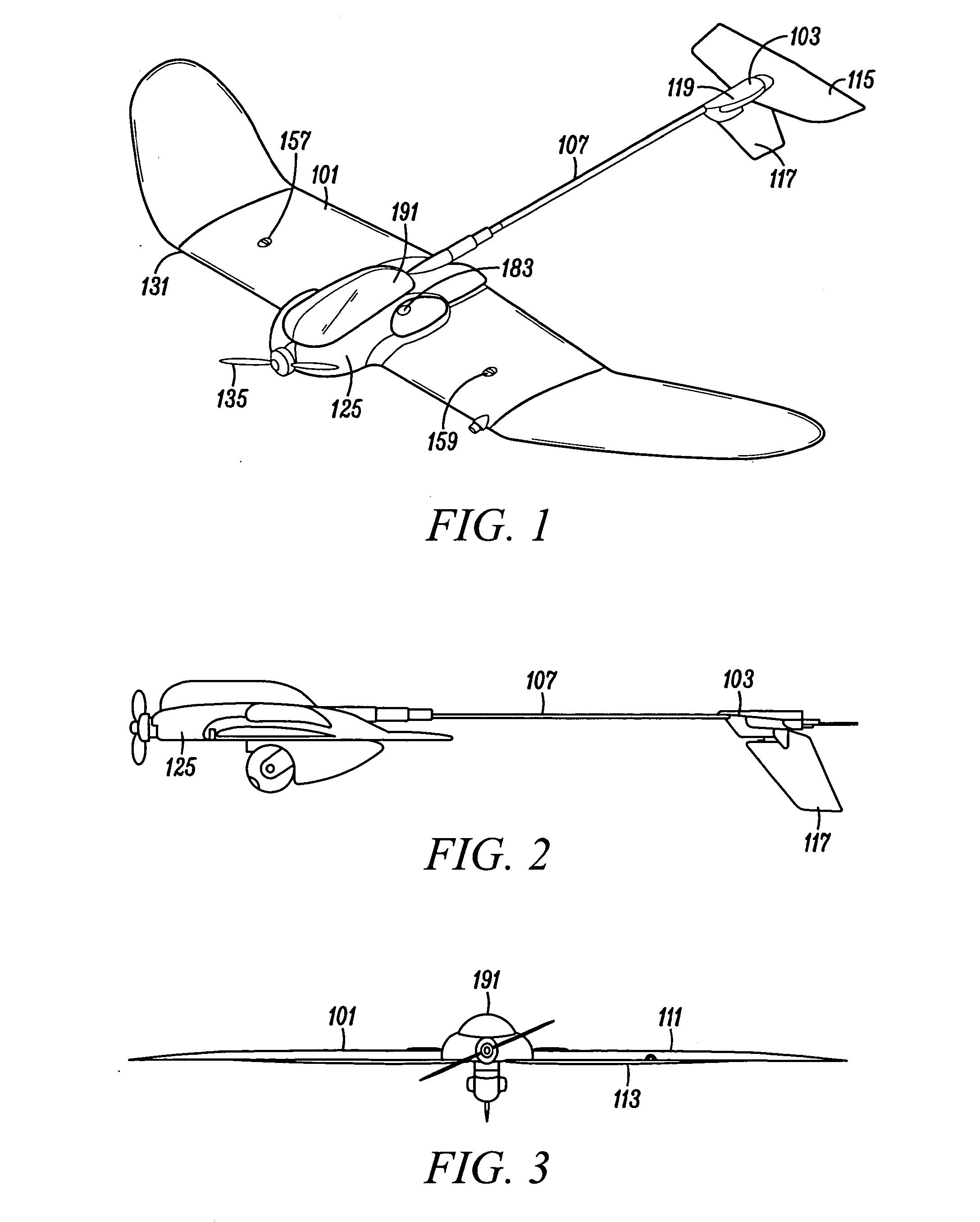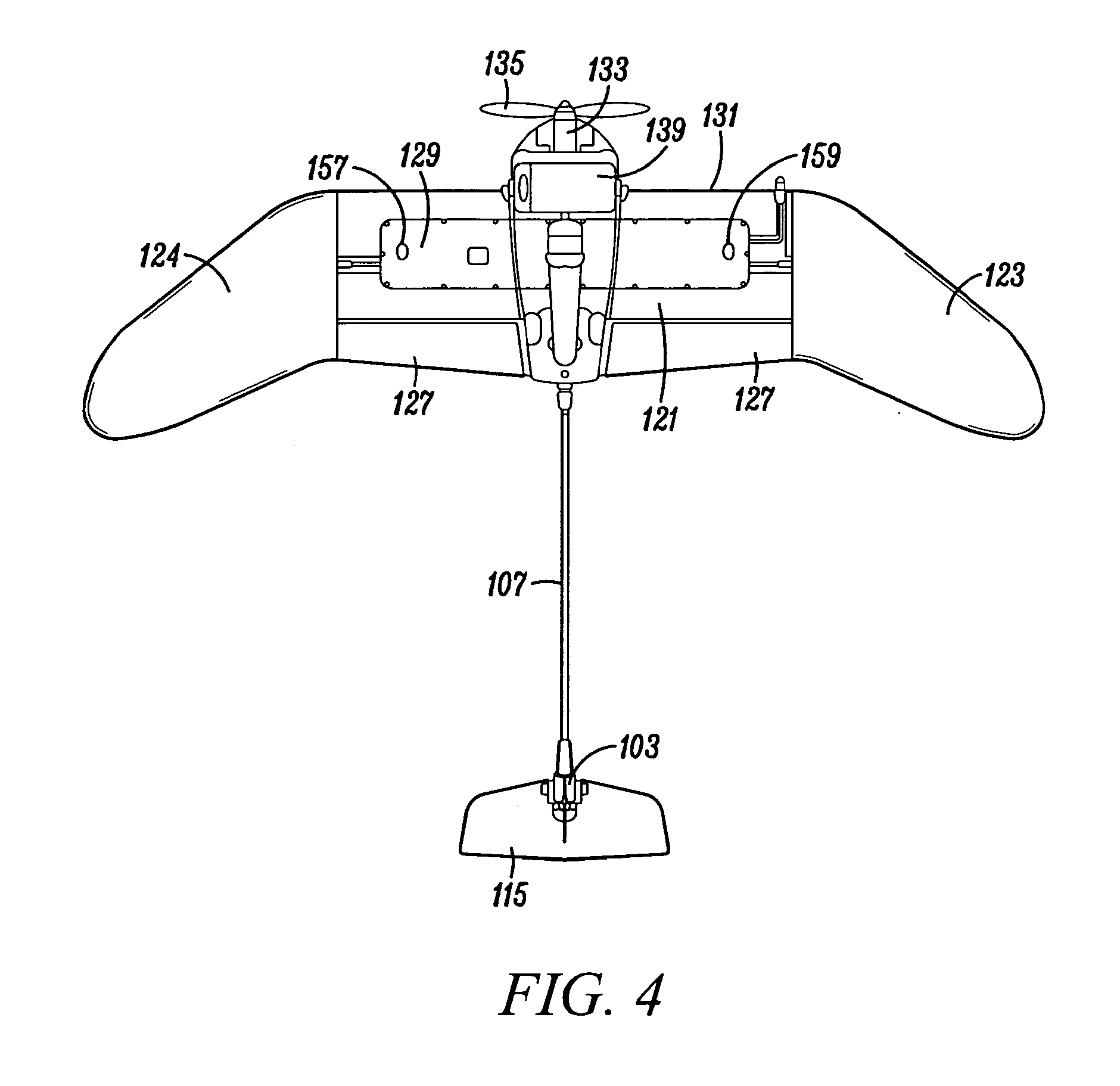Inverted-landing aircraft
a technology of inverted landing and aircraft, which is applied in the direction of vehicle position/course/altitude control, process and machine control, instruments, etc., can solve the problems of life-threatening visual exposure of the ground crew, the cost of such an aircraft is generally large in comparison to the cost of its payload,
- Summary
- Abstract
- Description
- Claims
- Application Information
AI Technical Summary
Benefits of technology
Problems solved by technology
Method used
Image
Examples
Embodiment Construction
[0027]The invention summarized above and defined by the enumerated claims may be better understood by referring to the following detailed description, which should be read with the accompanying drawings. This detailed description of particular preferred embodiments of the invention, set out below to enable one to build and use particular implementations of the invention, is not intended to limit the enumerated claims, but rather, it is intended to provide particular examples of them. Furthermore, there is no intent to be bound by any expressed or implied theory presented in this application.
[0028]Typical embodiments of the present invention reside in an unmanned aerial vehicle (“UAV”) (i.e., an unmanned aircraft system) including a UAV configured to invert prior to landing, and then go in to a controllable stalled flight condition that provides for rapid but controlled descent.
[0029]UAV Aircraft
[0030]With reference to FIGS. 1 to 4, a first embodiment of an aircraft under the inventi...
PUM
 Login to View More
Login to View More Abstract
Description
Claims
Application Information
 Login to View More
Login to View More - R&D
- Intellectual Property
- Life Sciences
- Materials
- Tech Scout
- Unparalleled Data Quality
- Higher Quality Content
- 60% Fewer Hallucinations
Browse by: Latest US Patents, China's latest patents, Technical Efficacy Thesaurus, Application Domain, Technology Topic, Popular Technical Reports.
© 2025 PatSnap. All rights reserved.Legal|Privacy policy|Modern Slavery Act Transparency Statement|Sitemap|About US| Contact US: help@patsnap.com



